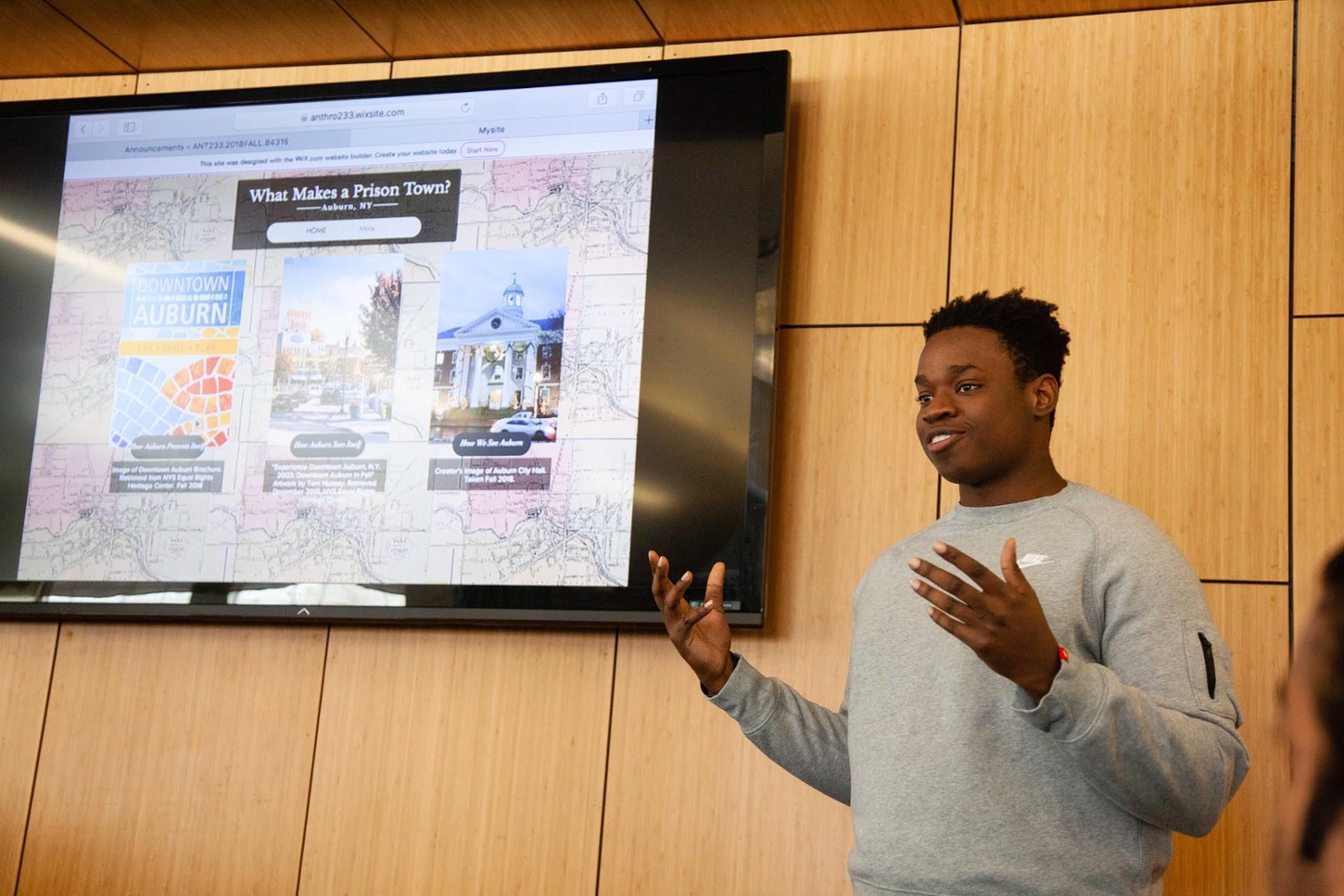Research
Cultural Politics of Prison Towns
This ethnographic study, conducted by Kristin Doughty and Joshua Dubler, is designed to understand how the presence of the preponderance of correctional facilities in the Rochester region shapes socio-cultural, political, and economic life in the area.
The city of Rochester resides in one of the world’s most explicitly carceral landscapes. Within ninety minutes by car are a dozen state prisons. How did these institutions get here? What does a prison mean for a person that resides in a prison town? How do prisons reflect and shape the political, economic and cultural lives of the people that live there? How do these nearby but largely invisible institutions shape the ways that we live in Rochester? There and here, what are the economic, political and social conditions that would make decarceration a desirable—and viable—political project?
This ethnographic research, conducted in part through an undergraduate methods-based research seminar, asks: How do prisons reflect and shape the social, political, economic and cultural lives of the people that live in those towns? In similar and different ways, how do our region’s many prisons and jails shape life in the city of Rochester?
In year one, beginning fall 2018, our foci were Attica (site of Attica Correctional Facility, a maximum security men’s facility built in 1931 and site of the infamous 1971 prison riot, and Wyoming Correctional Facility built adjacent to Attica as a medium-security men’s facility in 1984), Albion (site of Albion Correctional Facility, a medium-security women’s facility built in 1894, and Orleans Correctional Facility, a medium-security men’s facility built in 1984), and Auburn (site of Auburn Correctional Facility, a maximum security men’s prison built in 1917, prototype for widely emulated “Auburn system” and site of the first execution by electric chair).
In year two our foci aims to be Elmira (site of Elmira Correctional Facility, a maximum security prison for men founded in 1876, and Southport Correctional Facility, a supermax men’s prison built in 2000), Groveland (site of Groveland Correctional Facility, a medium security men’s facility built in 1982, and immediately adjacent to Livingston Correctional Facility, a medium security men’s facility opened in 1991), and Romulus (site of Five Points Correctional Facility, a supermax security men’s facility built in 2000, and proximate to Willard Drug Treatment Facility, a specialized prison for men and women opened in 1995).
In year three we will fill in gaps in all six external sites while focusing in on the city of Rochester, a majority minority town with extreme poverty rates. Rochester interfaces with the prison towns on its periphery in myriad ways, both obvious and invisible. Across these sites, we focus on towns with medium and maximum state facilities, and including historically-significant prisons and those built in recent waves of prison expansion, notably 1980s and 2000, and we will explicitly trace the connections between these rural towns and the ways that we, as Rochesterians, live.
Learn more on student project pages for Auburn and Attica.

